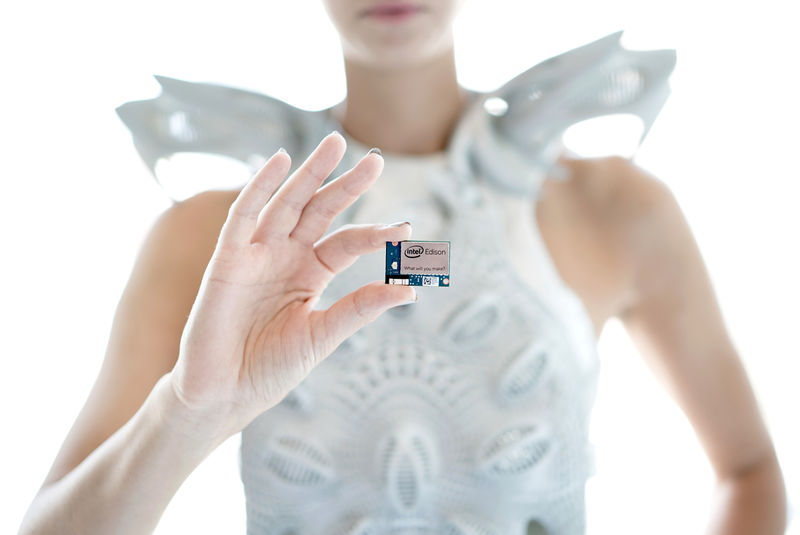Take a moment and imagine the possibility of logging and communicating fluctuations in your mood through the clothing that you wear. Now imagine communicating this information not only to others, but also to yourself, to have a better understanding of your own actions; in other words, a dress that functions as a “mood map”.
Dutch fashion-tech designer, Anouk Wipprecht - who specializes in electronic couture that intersects fashion design with engineering – didn’t just imagine this possibility, she made it a reality with her “Synapse Dress”, which made its premier in September 2014 during the Intel Development Forum in San Francisco.

Developed as a sensing garment, this interactive dress was designed in collaboration with Niccolo Casas and engineered to act on the electrical impulses of the body, which are processed through biosignals. Anouk created a smart dress that focuses on the wearer’s experiences and behaves on her behalf, making a complete learning system.
A true garment of our modern times, “Synapse” is a digitally-designed and 3D-printed interactive dress, powered by Intel’s newly launched Intel Edison microcontroller, and 3D printed in a flexible material, TPU 92A-1, at Materialise.
Although her third experience putting Materialise’s TPU 92A-1 to use (the first two being the interactive “Smoke Dress” and a series of designs for Cirque du Soleil’s LIGHT nightclub), “Synapse” marks Anouk’s first attempt at embedding Intel Edison into a sensing garment - with truly spectacular results! The Intel-Edison-powered dress logs your own actions and makes you and others understand when something within yourself or within your immediate environment captures your attention or gives you stress. Unlocking the potential for social, emotional and even “therapeutic” ways in how we can merge electronic fashion with body sensing networks and learning systems, this dress defines and uncovers new ways to explore and interact with the world around us.

The dress headpiece is fitted with a sensor that tracks the wearer’s attention level and focuses to monitor fluctuations in the wearer’s “internal” mode - where one’s attention level is usually high (around 80%). This can function internally to train your attention span, but also communicates externally by telling others that you are in a high state of focus and “do not disturb” while concentrated on a difficult task.

One of the other sensors embedded in the dress monitors proximity: if the wearer feels that someone is invading her personal space, the lights in the dress can give off up to 120 watts of brightness, telling the other person to back off. The dress has a camera on the front that can captures a picture whenever the subject feels either most tense or most relaxed so she can later track what was making her feel that way. In short, it’s a dress with a lot of on-board hardware that challenges the body. Thanks to these new developments, the designer can now easily compute with a whole set of complicated hardware technologies.

Anouk's previous innovations for wearable technologies brought her to great height, but, with the use of her recent technology, body-activated interactions can also flourish. She is super excited about new finds that give depth to her design process.
"I cherish all new technologies; for example, Intel Edison allows me to integrate a super small piece of technology which can quickly compute complicated sets of signals, optional store and interconnect wirelessly to a lot of input data at once in a more advanced and more intelligent way. With digital design and manufacturing processes like 3D printing at Materialise for example, I can seamlessly create a garment, that rolls out of the machine, that I can directly embed, code, program and test out to be worn a few hours later. It simplifies certain things (manufacturing process), and deepens others (design process). At this point in time we stop 'crafting' fashion - but instead, 'engineer' your garment extensively,"
according to Anouk.

